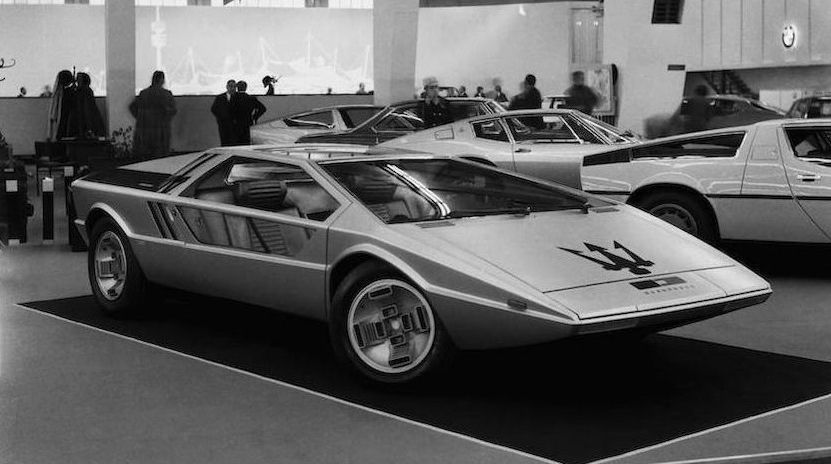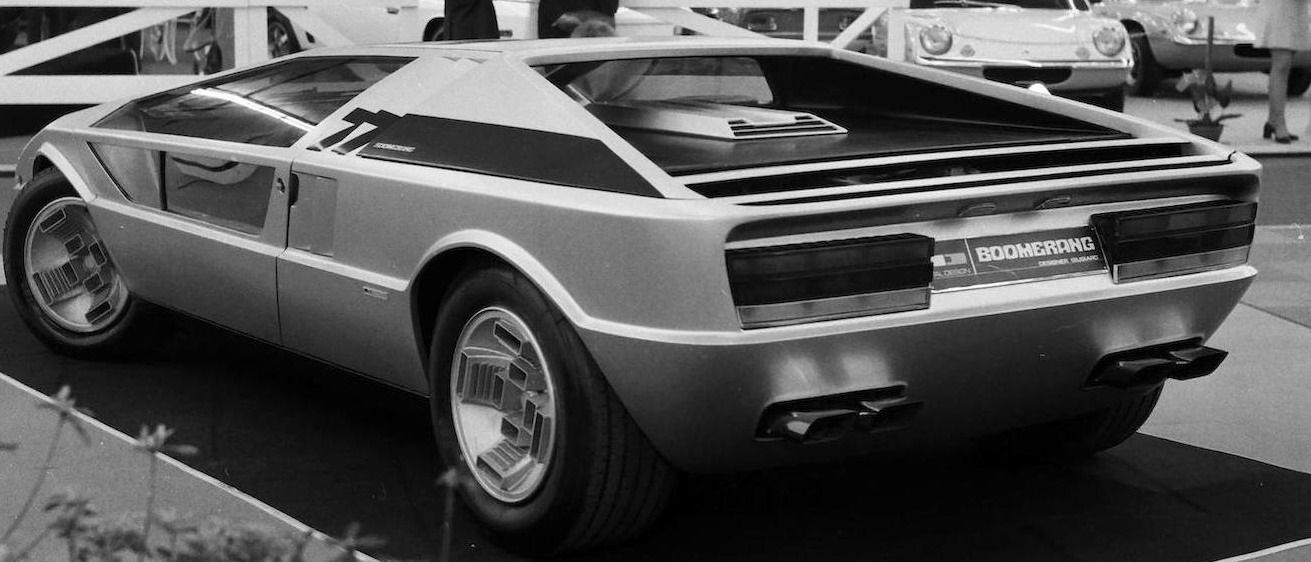Italian concept cars->ke169 of the 1970s were how the future was supposed to look. It’s the era that brought us the 1973-1990 Lamborghini Countach, the Lancia Stratos->ke3738 Zero Concept, the Lancia Sibilo concept and Pininfarina’s->ke69 1970 Ferrari 512S Modulo concept (Marcello Gandini designed all of these with the exception of the Ferrari).->ke252 Add the 1972 Maserati->ke51 Boomerang by Giugiaro->ke3778 to that list. The sole example will cross the auction->ke2845 block at the Bonhams event in September in Chantilly, France.
Originally shown at the Turin Motor Show in 1971 as an epowood mockup, the Maserati Boomerang wears a futuristic body penned by Giorgetto Giugiaro. It was designed shortly after he co-founded Italdesign Giugiaro, following stints at both Bertone->ke2523 and Ghia. It later reappeared at the 1972 Geneva Motor Show->ke228 as a fully functional car built on the chassis of the Maserati Bora.
Continue reading for the full story.
Several years after its unveiling, Giugiaro said he designed the Boomerang “...almost exclusively with a ruler,” which shouldn’t come as much of a surprise, but he was also somewhat critical of his own design, saying too much emphasis was placed on “graphic shapes,” and that aerodynamics should have been more of a priority. He’s probably being a little too hard on himself here, because the Boomerang is a jaw-dropping thing to behold.
It retains its original Bora running gear under the unique body: a mid-mounted, 4.7-liter V-8 producing around 300 horsepower producing a claimed top speed of 186 mph. The interior is as futuristic as the outside. The steering wheel rotates around a circular gauge cluster, and the austere dash is decked-out with charming 1970s-era tech.
Maserati continued to show the Boomerang at car shows until 1974, when it was sold to a Spanish owner. A German car collector then purchased it after finding it while on vacation in Spain in 1980, and later had it approved for road use in his home country. It was reunited with Mr. Giugiaro 10 years later, who signed its rear panel. It was then sold by Christie’s in 2002 for the equivalent of $812,000 and later in 2005 for $880,000.
Why it matters
Given the Boomerang’s one-off status and the fact that rare Italian supercars->ke177 are skyrocketing in value right now (some call it a bubble, but it seems like we’ve been waiting for it to burst for about five years), I wouldn’t be surprised to see its hammer price exceed $2 million. Watch this space to find out.


